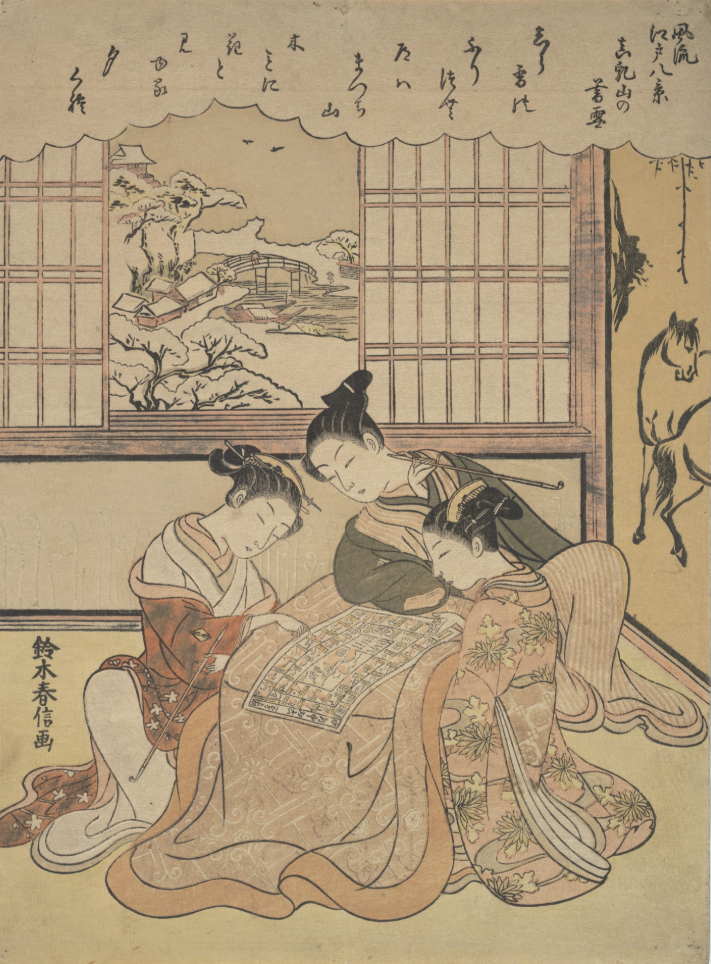Teach This Poem is a weekly series featuring a poem from our online poetry collection, accompanied by interdisciplinary resources and activities designed to help K-12 teachers quickly and easily bring poetry into the classroom.

The following activities and questions are designed to help your students use their noticing skills to move through the poem and develop their thinking about its meaning with confidence, using what they’ve noticed as evidence for their interpretations. Read more about the framework upon which these activities are based.
- Warm-up (whip around): Quickly go around the room and share a question about your heritage that you would like to ask your mother or another parental figure or guardian. If you would like to pass, say so, and your teacher will come back to you.
- Before Reading the Poem (noticing and pair share): If you do not know the meaning of the word shoji look it up. Then look very closely at the image of the wood block print Evening Snow on Matschi Hill by Suzuki Harunobu. What are the various elements in the image? How are they composed? What is in the foreground? The background? What separates them? Share what you noticed with a partner.
- Reading the Poem (individual reading): Read the poem by Kimiko Hahn silently, then write down the words and phrases that jump out at you.
- Listening to the Poem (enlist two volunteers to read the poem aloud): Listen as the poem is read aloud twice, and write down any additional words and phrases that jump out at you.
- Small-group Discussion: Share what you noticed in the poem. Are the composition of the poem and the image of the wood block print in any way similar?
- Whole-class Discussion: Why do you think the speaker in the poem asks her mother “what to call that paper screen that slides from the interior in”? Might the shoji screen be a metaphor for something deeper?
- Extension for Grades 7-8: Ask your mother or another parental figure the question about your heritage you mentioned in the warm-up activity. Record their response. Write up your interview and be prepared to present it to the class.
- Extension for Grades 9-12: Write a poem in which you ask your mother or another another parental figure the question you mentioned in the warm-up activity. Your poem should include the question, the person’s answer, and one or two metaphors to deepen the reader’s understanding of your exchange.
More Context for Teachers: In this video from a 2014 Chancellor Conversation, the poet Arthur Sze discusses his own work as a translator and “how important and crucial translation is in the forming of our poetics and our own evolution and journey as poets.” Watch the video.
